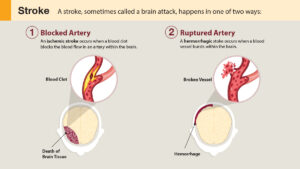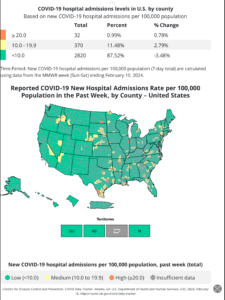The Basics
Overview
Diabetes is a leading cause of disability and death in the United States. Diabetes increases the risk of serious health problems like:
- Heart disease
- Stroke
- Blindness
- Nerve damage, which can cause you to lose a toe, foot, or leg
- Kidney failure
The good news is that you can do a lot to prevent or delay getting type 2 diabetes, including:
- Watching your weight
- Eating healthy
- Staying active
Types of Diabetes
What is diabetes?
Having diabetes means glucose (sugar) levels in your blood are too high. Your body depends on glucose for energy. When you eat, most of the food turns into glucose. Your blood carries the glucose to other parts of your body.
When you have diabetes, your body has trouble turning glucose into energy. Instead of being used by your body, glucose builds up in your blood and your body is starved of energy. Over time, high blood glucose can damage almost every part of your body.
Diabetes is a chronic (long-term) condition.
What is type 2 diabetes?
Type 2 diabetes is the most common form of diabetes. You’re more likely to get type 2 diabetes if you’re overweight and inactive – or if you have prediabetes.
Having prediabetes means your blood glucose levels are higher than normal, but not high enough for you to be diagnosed with type 2 diabetes.
What other types of diabetes are there?
- Type 1 diabetes seems to be caused by a problem with the immune system (the system that helps fight infection). Right now, there’s no way to prevent type 1 diabetes.
- Gestational diabetes is a type of diabetes that some women develop during pregnancy. Gestational diabetes increases the risk of health problems for you and your baby. For example, gestational diabetes can make it more likely that you or your baby will develop type 2 diabetes later in life. Learn more about gestational diabetes
Am I at Risk?
Am I at risk for type 2 diabetes?
Many things can put you at risk for type 2 diabetes. For example, you may be at risk if you:
- Have prediabetes
- Are over age 45
- Are overweight or have obesity
- Have a parent or sibling with type 2 diabetes
- Are African American, Alaska Native, Native American, Asian American, Hispanic or Latino, Native Hawaiian, or Pacific Islander
- Have high blood pressure or high LDL (“bad”) cholesterol
- Are physically active less than 3 times a week
Some risk factors only affect women. You’re also at risk for type 2 diabetes if you:
- Have had gestational diabetes (diabetes during pregnancy)
- Have given birth to a baby who weighed more than 9 pounds
- Have polycystic ovary syndrome (when your body produces more male hormones than normal)
Learn more about the risk factors for type 2 diabetes
What is prediabetes?
If you have prediabetes, the glucose levels in your blood are higher than normal – but not high enough to mean you have type 2 diabetes. Prediabetes increases your risk of developing type 2 diabetes and other serious health problems, like heart disease and stroke.
The good news about prediabetes is that healthy changes, like losing weight and getting enough physical activity, can prevent or delay type 2 diabetes. Find out more about prediabetes
Symptoms
What are the symptoms of type 2 diabetes?
Symptoms of type 2 diabetes often develop over several years. Many people with type 2 diabetes have symptoms for a long time without noticing them. Some people may never notice any symptoms.
Symptoms of diabetes include:
- Being very thirsty or hungry
- Feeling more tired than usual
- Urinating (peeing) more than usual
- Losing weight for no reason
- Having cuts or bruises that are slow to heal
- Having blurry vision
- Feeling numb or tingly in your hands or feet
Because symptoms of type 2 diabetes can be hard to spot, it’s important to talk with your doctor about your risk for type 2 diabetes. If you have risk factors or notice any symptoms, ask your doctor about getting tested.
Original Article – https://health.gov/myhealthfinder/health-conditions/diabetes/take-steps-prevent-type-2-diabetes





